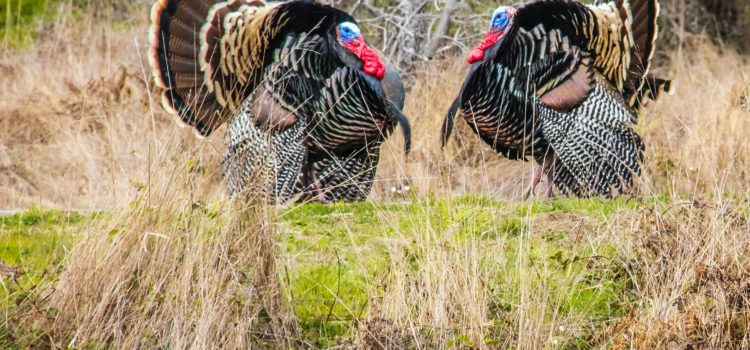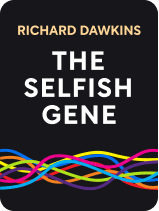

This article is an excerpt from the Shortform book guide to "The Selfish Gene" by Richard Dawkins. Shortform has the world's best summaries and analyses of books you should be reading.
Like this article? Sign up for a free trial here .
What is reciprocal altruism and what does it look like in nature? How does reciprocal altruism actually benefit the individual helping someone else?
Reciprocal altruism is an action taken that can benefit another animal in return for their beneficial action. Still, the reasoning behind the supposed altruism may actually be rooted in selfishness.
Read more about reciprocal altruism and what Richard Dawkins says about it in The Selfish Gene.
Examples of Reciprocal Altruism and Similar Behaviors in Nature
Many types of animals move, or even live, together in groups. Some advantages of this are obvious. For instance, prey animals gain some protection from predators. Meanwhile, predators like hyenas can bring down much larger prey by working together, so it benefits them all even though they have to share the food afterward. Birds fly in formation and switch leaders frequently to reduce turbulence and make travel less tiring. There are countless other examples in nature.
In Chapter 1, we discussed birds who give alarm calls to warn of predators, at some risk to themselves. However, this act of altruism may ultimately be an act of selfishness—in fact, considering the selfish gene theory, it must be. By the simple fact of natural selection, we can infer that giving that alarm call is more beneficial to the individual’s genes than not giving it would be.
There are any number of reasons this could be the case. If a single bird simply flew away upon spotting a predator, it would lose the advantages of living in a flock. If it froze and hid, but the rest of the flock kept moving around and making noise, that would draw the predator closer anyway, so it would be best to call a quick warning so the entire flock can hide. Finally, there’s the simple likelihood that by taking a small risk to itself, the individual giving the call can protect many of its relatives. Warning calls are a classic example of altruism.
Grooming is an example of reciprocal altruism: Two or more animals showing each other mutual altruism. Grooming is especially interesting because there’s a delay between one act of altruism and the act being repaid—pulling a harmful parasite off another individual doesn’t help you until you have a parasite to be pulled yourself.
The cost of grooming another member of the population is minuscule, but it’s still greater than zero. Therefore, among species that participate in communal grooming, there must be greater benefit than cost for doing so. The obvious explanation is that the benefit of having a parasite pulled off of you is much greater than the cost of pulling one off of another individual. However, another possibility is that members of the population evolved the ability to hold a grudge; that is, they’ll refuse to groom selfish individuals who don’t groom others. Such behavior would naturally drive down the number of selfish individuals as they fall victim to parasites.
Altruism and Selfishness in Insects
Much more extreme examples of altruism are seen in social insects like ants and bees. In a beehive, for instance, the vast majority of the bees are workers who can’t breed and will give their lives to protect the hive.
From the perspective of a selfish animal, such behavior makes no sense. However, from the perspective of a selfish gene, it is easily explained with two key facts. First, the workers are sterile—they can’t pass their genes on directly, so dying is no great loss. Second, the entire hive is descended from the same mother: the queen. Therefore, they’re all relatives and will act to protect each others’ genes. If this still seems strange, it may be helpful to think of the entire hive as a single organism, and the individual insects as specialized cells. For example, the workers who die defending the hive from intruders are acting like the hive’s immune system. The function of the entire hive is to ensure that the breeders survive and continue passing on their genes, just as the function of an animal’s entire body is to ensure that it reproduces.
A less-appealing comparison would be to a farm; the workers are using the queen to “farm” their own genes, despite not being able to breed themselves. This makes more sense than it seems to at first glance, because insects have a number of complex inheritance mechanisms that often mean they’re much more closely related to each other than other types of animals are.
Thus far, all the examples of reciprocal altruism that we’ve explored have been between kin. However, not all reciprocal altruism is between family members—sometimes it’s found even between entirely different species.
Continuing the farming analogy, some species of ants will actually “farm” certain types of fungus. The ants feed the fungus leaves and weed out competing species, which benefits the fungus. In return for this, the ants get a steady food supply. Ants have also been observed “milking” aphids for a sugar-rich excretion that the aphids produce while feeding. In return, the ants protect the aphids from other insects that might eat them.
When it occurs between members of different species, this type of reciprocal altruism is called mutualism or symbiosis. Symbiosis refers to creatures who spend a great deal of time—sometimes their entire lives—benefiting each other, while mutualism refers to specific, short-term interactions between organisms.
Reciprocal Altruism in Humans
Reciprocal altruism, especially delayed reciprocal altruism such as communal grooming, raises a number of interesting thoughts about humans. We have long memories and can recognize one another, which would seem to suggest that reciprocal altruism should have played a large role in our evolution. Our ability to reason—and possibly a great number of other aspects of our psychology like gratitude, jealousy, and guilt—may be highly evolved versions of mechanisms for helping each other and recognizing selfish individuals.
It’s even possible that, with human capacity for foresight, we can develop a culture of pure altruism and protect it from selfish individuals. Remember that in the example of the fighting or bluffing birds, the single best outcome for each individual bird was for them all to be bluffers; the system only falls apart because it’s easily exploited by a single fighter. Humans may have the capacity to move beyond the commands of the selfish gene and build a culture that benefits everybody, with defenses against selfish people who would try to take advantage of such altruism.
Unfortunately, while fun to think about, this is currently nothing but speculation.

———End of Preview———
Like what you just read? Read the rest of the world's best book summary and analysis of Richard Dawkins's "The Selfish Gene" at Shortform .
Here's what you'll find in our full The Selfish Gene summary :
- Why organisms don't matter, only genes do
- How all life forms begin with a replicating molecule
- How species need to balance aggression and pacifism to survive






